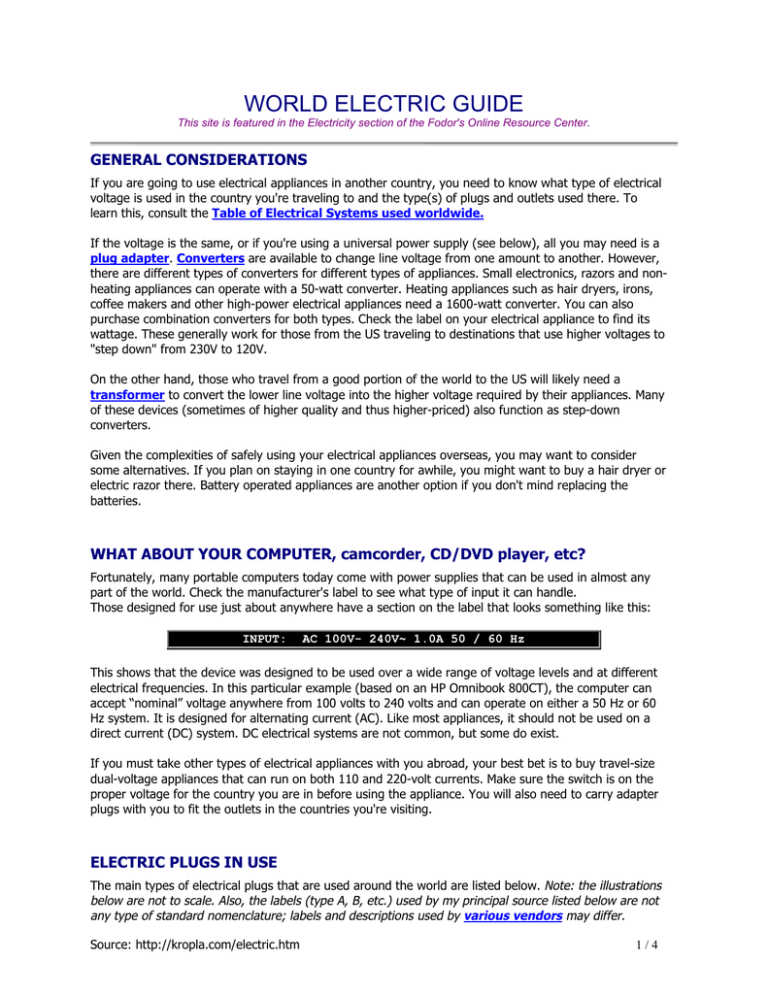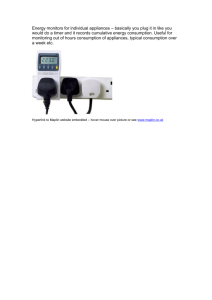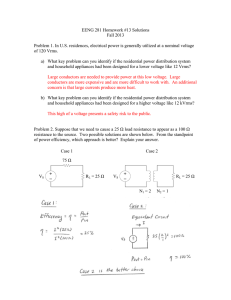World Electric Guide
advertisement

WORLD ELECTRIC GUIDE This site is featured in the Electricity section of the Fodor's Online Resource Center. GENERAL CONSIDERATIONS If you are going to use electrical appliances in another country, you need to know what type of electrical voltage is used in the country you're traveling to and the type(s) of plugs and outlets used there. To learn this, consult the Table of Electrical Systems used worldwide. If the voltage is the same, or if you're using a universal power supply (see below), all you may need is a plug adapter. Converters are available to change line voltage from one amount to another. However, there are different types of converters for different types of appliances. Small electronics, razors and nonheating appliances can operate with a 50-watt converter. Heating appliances such as hair dryers, irons, coffee makers and other high-power electrical appliances need a 1600-watt converter. You can also purchase combination converters for both types. Check the label on your electrical appliance to find its wattage. These generally work for those from the US traveling to destinations that use higher voltages to "step down" from 230V to 120V. On the other hand, those who travel from a good portion of the world to the US will likely need a transformer to convert the lower line voltage into the higher voltage required by their appliances. Many of these devices (sometimes of higher quality and thus higher-priced) also function as step-down converters. Given the complexities of safely using your electrical appliances overseas, you may want to consider some alternatives. If you plan on staying in one country for awhile, you might want to buy a hair dryer or electric razor there. Battery operated appliances are another option if you don't mind replacing the batteries. WHAT ABOUT YOUR COMPUTER, camcorder, CD/DVD player, etc? Fortunately, many portable computers today come with power supplies that can be used in almost any part of the world. Check the manufacturer's label to see what type of input it can handle. Those designed for use just about anywhere have a section on the label that looks something like this: INPUT: AC 100V- 240V~ 1.0A 50 / 60 Hz This shows that the device was designed to be used over a wide range of voltage levels and at different electrical frequencies. In this particular example (based on an HP Omnibook 800CT), the computer can accept “nominal” voltage anywhere from 100 volts to 240 volts and can operate on either a 50 Hz or 60 Hz system. It is designed for alternating current (AC). Like most appliances, it should not be used on a direct current (DC) system. DC electrical systems are not common, but some do exist. If you must take other types of electrical appliances with you abroad, your best bet is to buy travel-size dual-voltage appliances that can run on both 110 and 220-volt currents. Make sure the switch is on the proper voltage for the country you are in before using the appliance. You will also need to carry adapter plugs with you to fit the outlets in the countries you're visiting. ELECTRIC PLUGS IN USE The main types of electrical plugs that are used around the world are listed below. Note: the illustrations below are not to scale. Also, the labels (type A, B, etc.) used by my principal source listed below are not any type of standard nomenclature; labels and descriptions used by various vendors may differ. Source: http://kropla.com/electric.htm 1/4 A Flat blade attachment plug B Flat blades (same as type A), but with round grounding pin C Round pin attachment plug NOTE: a 'C' style plug can be used with 'E', 'F' and some 'L' receptacles. D Round pins with ground E Round pin plug and receptacle with male grounding pin Click on the picture for more Source: http://kropla.com/electric.htm 2/4 F "Schuko" plug and receptable with side grounding contacts G Rectangular blade plug H Oblique flat blades with ground I Oblique flat blades (inverted V-shape) with ground J Round pins with ground (offset) K Round pins with spade ground Source: http://kropla.com/electric.htm 3/4 L Round pins with ground (in-line) M "South African" plug, similar to type D but larger and with one oversized pin ADAPTERS AND CONVERTERS An adapter will allow you to plug an appliance designed for one type of outlet into another type of outlet. Despite the fact that more than a dozen different types of plugs are in use, a typical travel adapter kit usually contains about five adapters which are capable of dealing with most of the outlets shown here. Adapters often manage this versatility by bypassing the ground/earth wire. Is this a good idea? Maybe, but not necessarily. Not all appliances need to be grounded/earthed, and for short-term activities like running a portable computer and recharging batteries, the adapter's convenience usually outweighs any potential safety concerns that might be caused by not using the ground/earth connection. For appliances that require grounding/earthing, and for long-term hookups, you should obtain an adapter that allows you to use the ground/earth wire. These adapters could be more expensive and may be more difficult to find prior to reaching your destination, but should be available locally (at your destination) at hardware or electronics stores. Remember: an adapter by itself will not change the electrical voltage. You must be sure that your appliance can handle different voltages (either automatically or through a voltage switch). If it can't, you will need a voltage converter. Converters and sets of adapter plugs are available at travel & luggage stores and at Radio Shack/Tandy and other electronic stores. They can often be found in airport shops and duty free stores. A set of adapter plugs costs around $10 to $15US and in some stores you can buy an individual adapter for only a few dollars. Source: http://kropla.com/electric.htm 4/4





